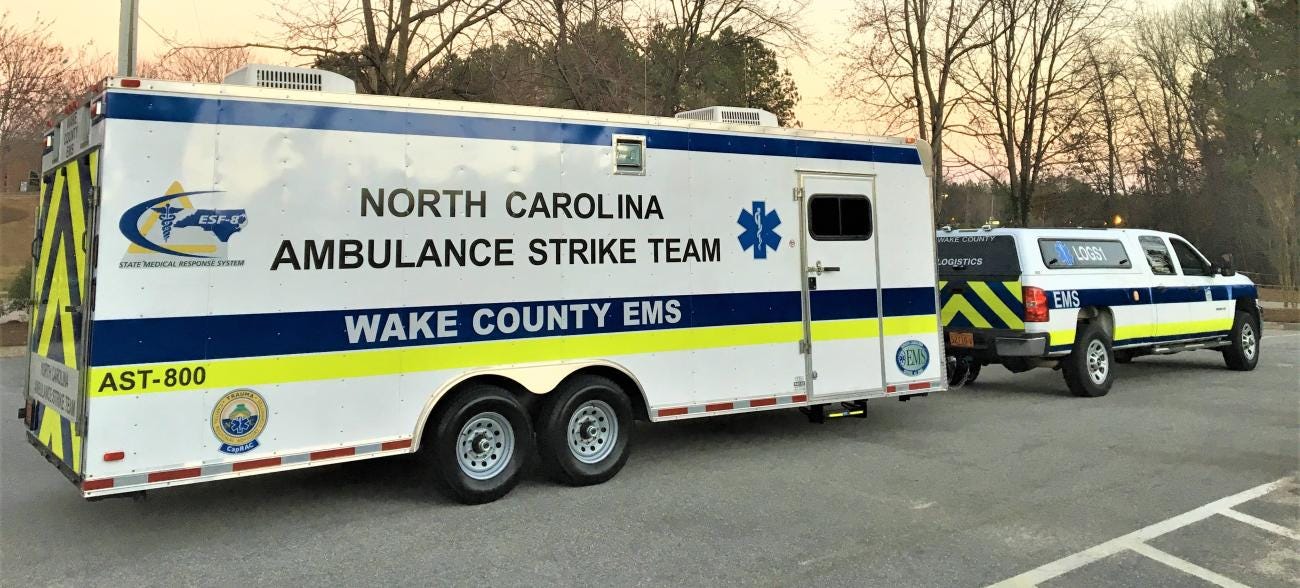North Carolina Expands VIPER Funding for First Responders’ Statewide Radio Network
General Assembly approves a $2.1 million annual boost for VIPER budget, the statewide radio system linking police, fire, and EMS. The first budget increase since 2016.
Raleigh, NC, Oct. 31, 2025 — The North Carolina General Assembly passed a new law, SL2025-97 (document), on October 22nd, approving a permanent $2.1 million annual increase to maintain and operate the Voice Interoperability Plan for Emergency Responders (VIPER) network, the backbone of radio communication for police, fire, EMS, and emergency management agencies across all 100 counties.
The new funding marks the first recurring budget increase for VIPER operations since 2016, according to state budget documents. Managed by the North Carolina State Highway Patrol, the system enables thousands of first responders and public-safety officials to communicate seamlessly during both daily incidents and major disasters, from multi-county search-and-rescue efforts to hurricanes and wildfires.
During a large-scale emergency, for example, a trooper in Chatham County, a firefighter in Raleigh, and a paramedic in Holly Springs can all use their radios to communicate on the same statewide system, a level of interoperability that allows coordination across agencies and jurisdictions and, officials say, saves lives.
What VIPER Is and Why It Matters
The VIPER network is a statewide digital radio system that links more than 125,000 radios used by local, state, and federal agencies. Unlike traditional county-specific radio systems, VIPER allows users to roam anywhere in North Carolina and remain connected through a shared network of over 230 radio tower sites.
The system was created in the early 2000s, following 9/11, which highlighted gaps in cross-agency communication. Today, it is essential for coordinated emergency response across jurisdictions, especially during natural disasters such as Hurricane Helene, which disrupted communications across multiple mountain counties in 2024.
Why the Funding Increase Was Needed
For nearly a decade, VIPER’s base operating budget remained flat while the network’s coverage, user base, and technology demands continued to grow. State audits and Highway Patrol reports identified a multi-million-dollar structural shortfall in annual maintenance funding, forcing the program to defer tower upgrades and reallocate construction funds to keep the network running.
Key cost drivers include:
Tower site leases, power, and repairs for more than 230 radio sites statewide.
Replacement of aging base-station and microwave-link equipment as the system transitions to the new P25 Phase 2 digital standard.
Security and vandalism mitigation at remote tower locations.
Software licensing, network monitoring, and vendor support, primarily through contracts with Motorola Solutions, which supplies VIPER’s core technology.
Officials also cited the need to improve system redundancy and resilience, including backup controllers and hardened communications routes.
Impact of the New Funding
The $2.1 million increase is recurring, meaning it becomes part of VIPER’s permanent base budget beginning in the 2025-26 fiscal year. The money is expected to close a long-standing operational gap and help ensure the network’s reliability as statewide demand continues to rise.
Legislative analysts described the new funding as an investment in public safety infrastructure. They emphasized that every emergency call depends on clear, reliable communication, and that the added funding ensures responders anywhere in North Carolina, from Murphy to Manteo, can count on that connection when it matters most.
Looking Ahead
The State Highway Patrol continues to oversee VIPER’s modernization, with a much-needed upgrade scheduled for completion by January 2027. That transition will double channel capacity without adding new frequencies, further enhancing voice clarity and encryption.
With the new recurring funds now in place, VIPER leaders say the focus can shift from “keeping the lights on” to strengthening North Carolina’s emergency-communications backbone for the next generation.

